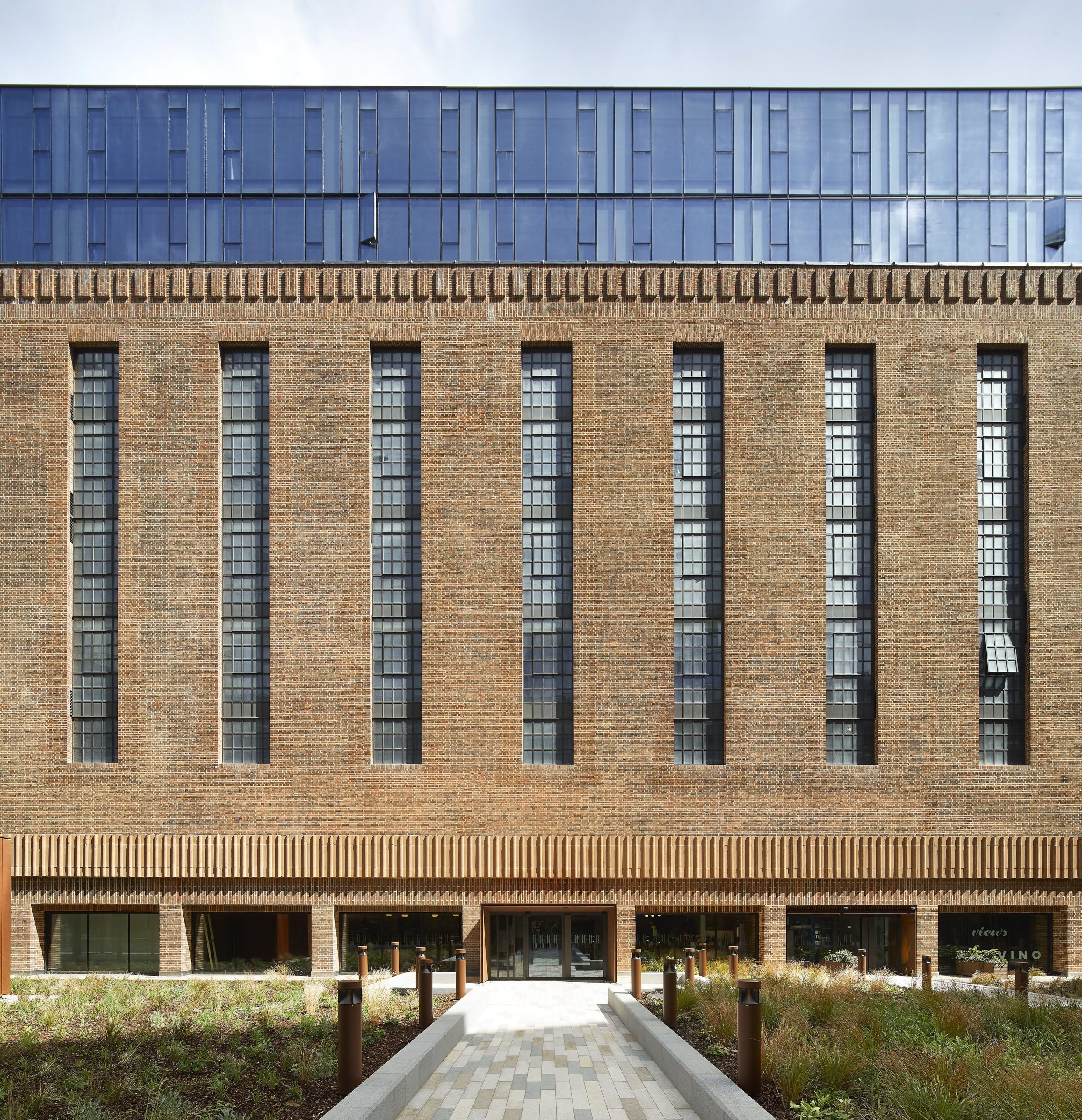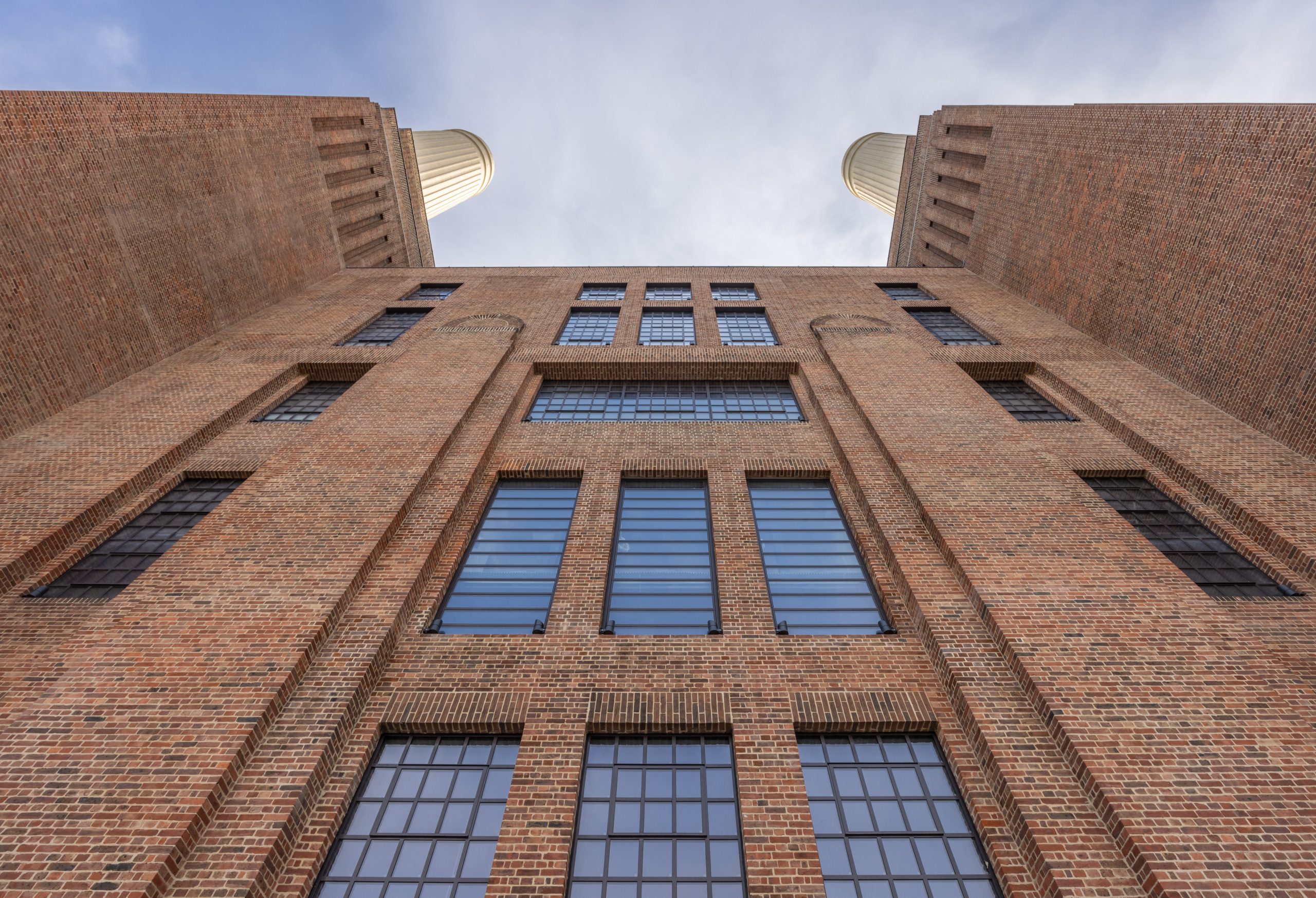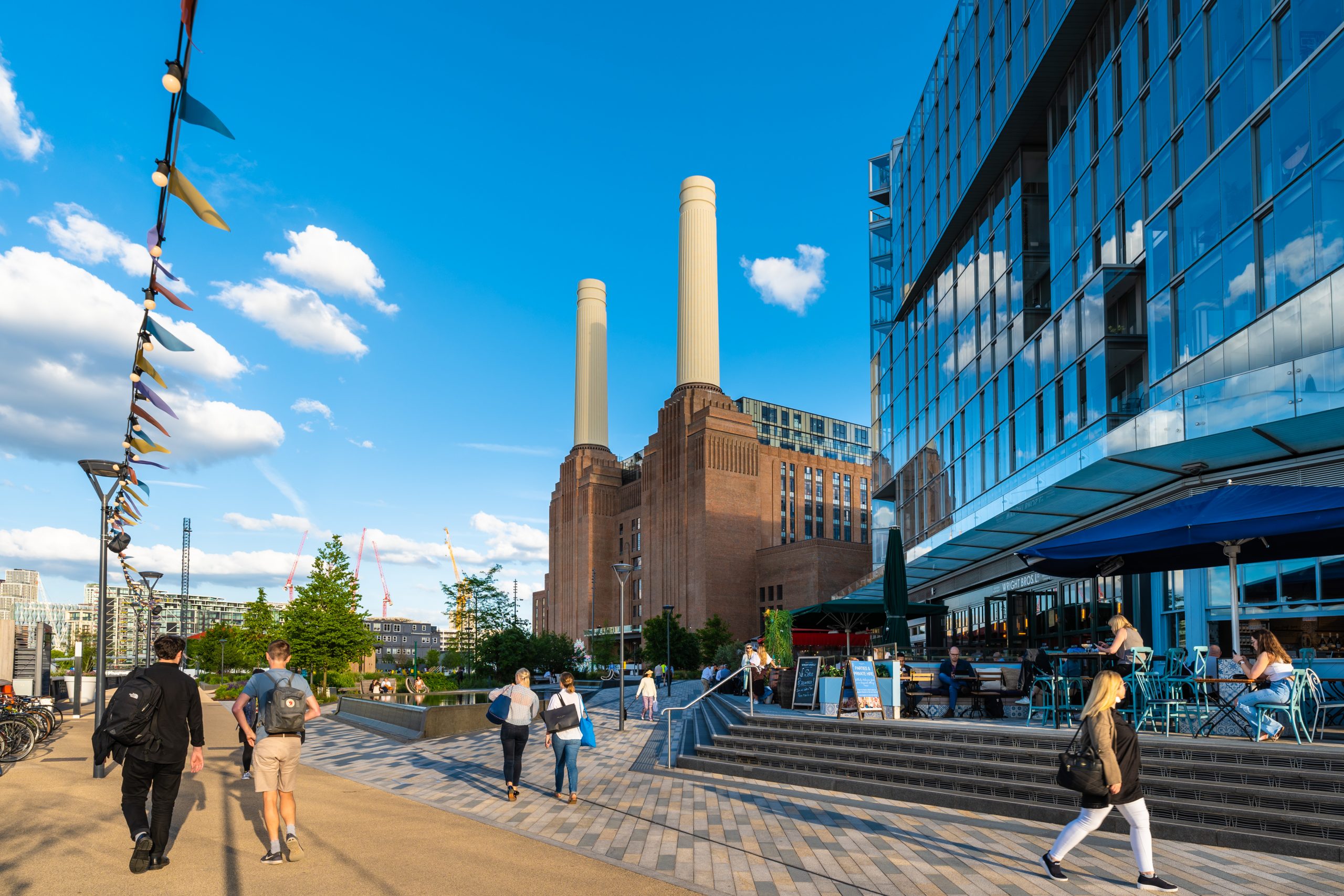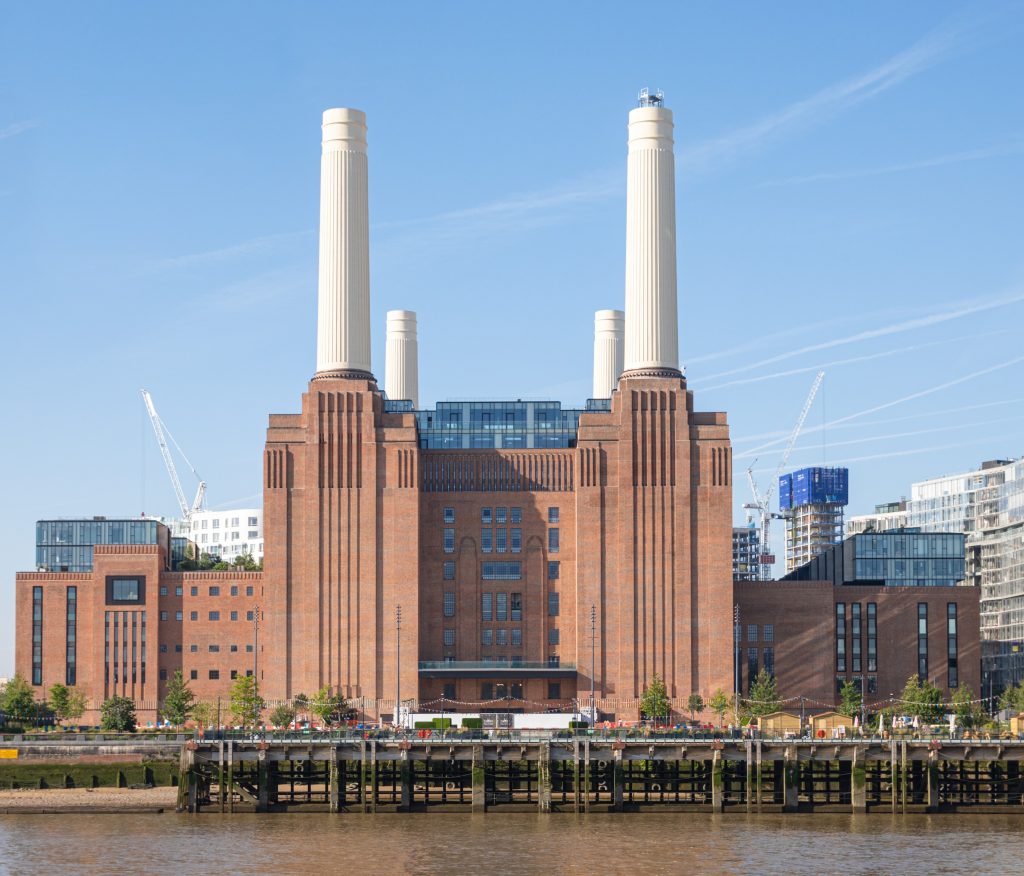Battersea Power Station’s Transformation
 Image Credit: Peter Landers
Image Credit: Peter Landers
London’s largest regeneration project, Battersea Power Station,is opening its doors to the public for the first time from Friday 14th October 2022.
•The project has seen Wilkinson Eyre and Battersea Power Station Development Company (BPSDC) work together to sensitively restore and adapt the Grade II* listed structure’s triumphant former industrial spaces, to create a new mixed-use neighbourhood for London, conserving and enhancing the iconic building’s heritage features.
•Originally designed bythe UK’s renowned architect, Sir Giles Gilbert Scott, Battersea Power Station historically provided one fifth of London’s electricity, supplying some of the capital’s most recognisable landmarks including the Houses of Parliament and Buckingham Palace, before being decommissioned in 1983.
•The opening marks the culmination of almost a decade of intensive work to restore the globally recognised landmark, with Wilkinson Eyre leading the design, through concept, detail and delivery,for this bold reimagining of one of the world’s most famous buildings. It follows a series of phased completions, including the opening of the first residential apartments in 2021.
Amenities
•The newly restored Battersea Power Station features over 100 shops, restaurants and cafes,events venues, new office space and 254 new apartments, plus Lift 109,a unique chimney lift experience offering 360-degree panoramic views of London’s skyline.
•The project forms the cornerstone of a £9bn regeneration project, representing one of London’s largest and most visionary new riverside neighbourhoods, offering a vibrant community of homes,shops, restaurants, offices, culture and leisure venues, as well as 19 acres of public space, all serviced by an extension to the London Underground Northern Line.
The Restoration
•WilkinsonEyre’s extensive yet sympathetic restoration introduces a contemporary feel to the industrial heritage of the building, while respectfully enhancing its historical features, and retaining its sense of scale and visual drama. It creates a new state-of-the-art events space, along withshops, restaurants and cafés, large open-plan office spaces, and a series of Sky Villas positioned around a garden square above the Boiler House, and to either side of the Power Station.
•The chimneys, which were rebuilt between 2014-2017 using the original construction method as when they were first built in the 1930s and 1950s, and un obstructed Turbine Halls, remain the dominant features of the building, while other major design features include a full-height glass void behind the southern wall, and a vast central atrium.
•While the restoration of Turbine Hall A retains the Art Deco feel of when it was first built in the1930s, Turbine Hall B which dates back to the 1950s has a more minimalist aesthetic.Turbine Hall A’s internal fenestration is complemented by bespoke balustraded galleries, and bridges nowanimate the large volume, which is filled with natural light from carefully restored skylights above.The two Turbine Halls will house an array of carefully curated brands from around the world, the first time both halls will beopen to the public.
•The Power Station’s two Control Rooms,which managed the distribution of power from Carnaby Street toWimbledon–even powering Buckingham Palace and the Houses of Parliament, have also been meticulously restored. Control Room Aisset to become a unique events space and Control Room B has been transformed into an exciting new all day bar concept,where patrons will be able to get up close and personal with the Control Room’s original dials and controls.
•In the Boiler House, two spectacular entrance atria will greet visitors arriving from the north and south, and new rooflights reveal the iconic chimneys from below. The project also comprises Switch House West, completed in 2021, and Switch House East, completed earlier this year, which were once home to the Power Station’s main switch gear, laboratory, battery and assembly rooms, and have now been respectfully restored into apartments.
•Throughout the project there is a purposeful juxtaposition of brick with glass, and historic ceramictile with contemporary steel. Approximately 1.8 million bricks were sourced from the original brickmakers, Northcot Bricks in Gloucestershire and Blockleys in Shropshire,to repair thePowerStation’s walls, and new homes feature brick and steelwork from the1930s and1950s.
•Bold new structural interventions include bow string trusses holding up the original south entrance wall. The roofs of all main volumes now have fully planted gardens, and the surrounding area of former coal yards and railway sidings have been reinvented as a new park and public space for Londoners to visit, shop and spend time.





Project Team Credits
•Architects:WilkinsonEyre (Project principal, Jim Eyre; Project director; Sebastien Ricard)
•Client:Battersea Power Station Development Company(BPSDC)
•Structural Engineer:Buro Happold•M&E Engineer:Chapman BDSP
•Construction Manager:MACE
•Lighting Designer:Spiers & Major
•Residential Apartment Designer:Michaelis Boyd
•Project Manager:Turner & Townsend
•Cost Consultant:Gardiner & Theobald
•Planning Consultant:DP9
•External Landscaping:LDA Design
•Roof Garden Design:Andy Sturgeon
•Conservation Consultant:Purcell

